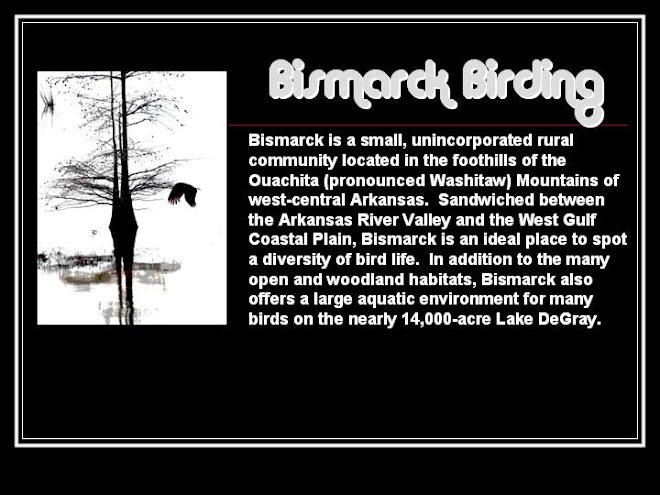
While traveling through the bayous of Louisiana, we stopped to take pictures of a few water fowl when this flash of red flew by and lighted on this branch. I quickly got off one shot of the bird and disappointingly noted that it was "just" a dove. However, upon arriving home to check my pics more closely I was delighted to see this was not just another mourning dove but instead was a species of dove I had never seen before, an Inca Dove (
Columbina inca). The giveaway to its identity is the red tipped wings (only seen in flight), scaly back, and white margin on the long gray tail. This is a tropical dove that is found in the dry, hot areas of the southwest US and Mexico, but is expanding its range North so I will be watching for it in Arkansas (global warming maybe good for something).


 I am a bit unsure about my identification. The common tern (Sterna hirundo) or Forster's tern (Sterna forsteri)? I can only go by checklists at ebird sightings that show Forster's tern much more common during February along the Texas/Louisiana coast than the common tern. If it is truly Forster's tern, this bird has the distinction of being an exclusive resident of N. America. One look at its wings tells you it is a speed demon that can turn on a dime. This tern was not recognized as a separate species until 1831 and was named in honor of Johann Reinhold Forster, a German pastor/naturalist who accompanied Capt. Cook on his 1772 trip around the world.
I am a bit unsure about my identification. The common tern (Sterna hirundo) or Forster's tern (Sterna forsteri)? I can only go by checklists at ebird sightings that show Forster's tern much more common during February along the Texas/Louisiana coast than the common tern. If it is truly Forster's tern, this bird has the distinction of being an exclusive resident of N. America. One look at its wings tells you it is a speed demon that can turn on a dime. This tern was not recognized as a separate species until 1831 and was named in honor of Johann Reinhold Forster, a German pastor/naturalist who accompanied Capt. Cook on his 1772 trip around the world.











































